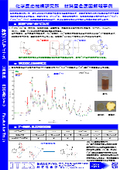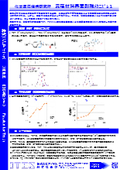Analysis of difficult-to-detect substances by reaction thermal decomposition GC-MS.
By adding a special reagent to the sample and heating it, it becomes possible to detect substances that are usually difficult to detect!
In a typical thermal decomposition GCMS, samples are heated to detect volatile components; however, analyzing components that do not volatilize upon heating or those with low detection sensitivity is challenging. Therefore, by adding a special reagent to the sample and heating it, it becomes possible to detect substances that are usually difficult to identify. For example, in the analysis of polymers, thermal decomposition of the polymer results in the detection of a large number of decomposition products, and in some cases, peaks may overlap with other additives, making analysis difficult. However, by performing reactive thermal decomposition GCMS, it is possible to detect the methyl esters of monomers and to separate and analyze them from the additives. Thus, even when the target analytes are difficult to detect using conventional analysis, reactive thermal decomposition GCMS allows for sensitive detection by selecting appropriate reagents for the analytes. [Examples] - Analysis of phthalate esters (DIDP) - Analysis of polymers (polyethylene terephthalate) - Analysis of copper corrosion inhibitors (BTA) *For more details, please refer to the PDF document or feel free to contact us.
basic information
For more details, please refer to the PDF document or feel free to contact us.
Price range
Delivery Time
Applications/Examples of results
For more details, please refer to the PDF document or feel free to contact us.
catalog(22)
Download All Catalogs

News about this product(3)
-

Chemical Analysis Concierge Service
We would like to introduce our "Chemical Analysis - Trust Us Service." When conducting component analysis of foreign substances or stains on products, it can be challenging to determine whether organic analysis or inorganic analysis is more suitable, and which specific analysis within organic or inorganic is the most appropriate. We provide a comprehensive service for customers who are struggling with the selection of analysis methods. Since each analysis device can measure different targets, it is necessary to choose a method that fits the purpose based on the information available.
-

Derivatization for GC/MS analysis
This article introduces a pretreatment method to enable the analysis of substances that are difficult to analyze using GC/MS. The pretreatment that converts difficult-to-analyze substances into analyzable forms is called "derivatization." Methods such as esterification, acylation, and silylation are used selectively according to the types and characteristics of the difficult-to-analyze substances. GC/MS measurements were conducted on citric acid solutions and citric acid solutions after esterification. It was found that citric acid, being a carboxylic acid, was not effectively detected without derivatization, but after esterification, trimethyl citrate was detected, confirming the presence of citric acid. By performing appropriate derivatization, more accurate analysis becomes possible.
-

Analysis of mica sheet adhesive components using GC/MS.
This is an introduction to the analysis of adhesive components in mica sheets using GC/MS. To investigate what components are contained in the mica sheets, spectroscopic measurements were conducted, suggesting that silicone-based adhesives are used. To determine the composition of the silicone-based adhesive, GC/MS measurements were performed. It was found that pentacyclooctasiloxane is used, and it was also discovered that dibutyl phthalate is added as a plasticizer and linear saturated hydrocarbons such as tridecane are added as lubricants.
Recommended products
Distributors
Aites was established in 1993, originating from the quality assurance department of the IBM Japan Yasu office. Based on the technical expertise cultivated through cutting-edge defect analysis and reliability assurance of electronic components at the IBM Japan Yasu office, we have provided various products and services that support the development and manufacturing of semiconductors, displays, organic EL, solar cells, and electronic components to customers both domestically and internationally.









































































